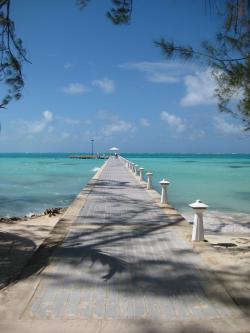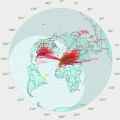jks
About
- Username
- jks
- Joined
- Visits
- 36,263
- Last Active
- Roles
- Member, Administrator, Moderator
- Points
- 640
Reactions
-
v1.354 SECURITY IMPROVEMENTS: Debian root password no longer unset/blank
Beginning with the v1.354 release the system makes a one-time check for the Debian Linux root account having no password set. And also the demo account named "debian" having the well-known default password ("temppwd") set or, alternatively, no password set. Note: these passwords are Linux passwords and are separate and distinct from the Kiwi admin password.
If either of these situations is found then the root and/or debian account passwords are changed as follows:- If your Kiwi admin password has been set (i.e. not blank) then this password will be used.
- If no Kiwi admin password has been set then the Kiwi serial number will be used (written on top of Kiwi PCB in white silkscreen box; also found on "network" tab of admin page and in the log messages).
The exact actions taken are shown in the Kiwi log the first time v1.354, or a later version, is run. Some examples:
If no further "SECURITY" messages appear then the root and debian passwords were okay and nothing was done.Nov 28 20:25:01 kiwisdr kiwid[12888]: 00:00:37.951 .... SECURITY: One-time check of Linux passwords..Nov 28 20:25:01 kiwisdr kiwid[12888]: 00:00:37.951 .... SECURITY: One-time check of Linux passwords.. Nov 28 20:25:01 kiwisdr kiwid[12888]: 00:00:37.951 .... SECURITY: WARNING Linux "root" password is unset! Nov 28 20:25:01 kiwisdr kiwid[12888]: 00:00:37.951 .... SECURITY: Setting it to Kiwi admin password Nov 28 20:25:01 kiwisdr kiwid[12888]: 00:00:37.951 .... SECURITY: "root" password set returned status=0 (OK) Nov 28 20:25:01 kiwisdr kiwid[12888]: 00:00:37.951 .... SECURITY: WARNING Linux "debian" account password is set to the default! Nov 28 20:25:01 kiwisdr kiwid[12888]: 00:00:37.951 .... SECURITY: Setting it to Kiwi admin password Nov 28 20:25:01 kiwisdr kiwid[12888]: 00:00:37.951 .... SECURITY: "debian" password set returned status=0 (OK)
These changes are necessary because Kiwis continue to be installed such that their ssh ports are accessible from the Internet with the root accounts having no password set. This makes them vulnerable to being found and infected by Internet viruses. This can happen if the Kiwi is behind a router but the ssh port is open though the router or if the Kiwi is directly connected to the Internet with a publicly routable address.Nov 28 20:25:01 kiwisdr kiwid[12888]: 00:00:37.951 .... SECURITY: One-time check of Linux passwords.. Nov 28 20:25:01 kiwisdr kiwid[12888]: 00:00:37.951 .... SECURITY: WARNING Linux "root" password is unset! Nov 28 20:25:01 kiwisdr kiwid[12888]: 00:00:37.951 .... SECURITY: Setting it to Kiwi serial number (because Kiwi admin password unset)
It is possible you have intentionally made the root password unset/blank to ease administration when your ssh port is properly secured from Internet access (there are better ways to do this, see e.g. the ssh man page and the file /root/.ssh/authorized_keys). In that case this change will overwrite your unset/blank password and you will have to restore it (e.g. with "passwd -d root"). - If your Kiwi admin password has been set (i.e. not blank) then this password will be used.
-
v1.354 SECURITY IMPROVEMENTS: Debian root password no longer unset/blank
Beginning with the v1.354 release the system makes a one-time check for the Debian Linux root account having no password set. And also the demo account named "debian" having the well-known default password ("temppwd") set or, alternatively, no password set. Note: these passwords are Linux passwords and are separate and distinct from the Kiwi admin password.
If either of these situations is found then the root and/or debian account passwords are changed as follows:- If your Kiwi admin password has been set (i.e. not blank) then this password will be used.
- If no Kiwi admin password has been set then the Kiwi serial number will be used (written on top of Kiwi PCB in white silkscreen box; also found on "network" tab of admin page and in the log messages).
The exact actions taken are shown in the Kiwi log the first time v1.354, or a later version, is run. Some examples:
If no further "SECURITY" messages appear then the root and debian passwords were okay and nothing was done.Nov 28 20:25:01 kiwisdr kiwid[12888]: 00:00:37.951 .... SECURITY: One-time check of Linux passwords..Nov 28 20:25:01 kiwisdr kiwid[12888]: 00:00:37.951 .... SECURITY: One-time check of Linux passwords.. Nov 28 20:25:01 kiwisdr kiwid[12888]: 00:00:37.951 .... SECURITY: WARNING Linux "root" password is unset! Nov 28 20:25:01 kiwisdr kiwid[12888]: 00:00:37.951 .... SECURITY: Setting it to Kiwi admin password Nov 28 20:25:01 kiwisdr kiwid[12888]: 00:00:37.951 .... SECURITY: "root" password set returned status=0 (OK) Nov 28 20:25:01 kiwisdr kiwid[12888]: 00:00:37.951 .... SECURITY: WARNING Linux "debian" account password is set to the default! Nov 28 20:25:01 kiwisdr kiwid[12888]: 00:00:37.951 .... SECURITY: Setting it to Kiwi admin password Nov 28 20:25:01 kiwisdr kiwid[12888]: 00:00:37.951 .... SECURITY: "debian" password set returned status=0 (OK)
These changes are necessary because Kiwis continue to be installed such that their ssh ports are accessible from the Internet with the root accounts having no password set. This makes them vulnerable to being found and infected by Internet viruses. This can happen if the Kiwi is behind a router but the ssh port is open though the router or if the Kiwi is directly connected to the Internet with a publicly routable address.Nov 28 20:25:01 kiwisdr kiwid[12888]: 00:00:37.951 .... SECURITY: One-time check of Linux passwords.. Nov 28 20:25:01 kiwisdr kiwid[12888]: 00:00:37.951 .... SECURITY: WARNING Linux "root" password is unset! Nov 28 20:25:01 kiwisdr kiwid[12888]: 00:00:37.951 .... SECURITY: Setting it to Kiwi serial number (because Kiwi admin password unset)
It is possible you have intentionally made the root password unset/blank to ease administration when your ssh port is properly secured from Internet access (there are better ways to do this, see e.g. the ssh man page and the file /root/.ssh/authorized_keys). In that case this change will overwrite your unset/blank password and you will have to restore it (e.g. with "passwd -d root"). - If your Kiwi admin password has been set (i.e. not blank) then this password will be used.
-
v1.352: new time station extension (timecode decoder)
I'll look at WWVB-ampl again. I first started with WWVB-phase and added the others from there. But later I noticed it didn't work as well as I had remembered. So maybe I've inadvertently changed something.
There are many improvements that could be made. I'm sure the PLL operation is not optimal since I don't understand PLLs very well (the one I use is Christoph's from his additions to the IQ display extension). There is no checking of the various parity bits in the timecode(s) or decoding of anything other than the time.
WWVB-phase has additional features that are currently ignored (e.g. the 6-minute extended symbols). And of course DCF77-phase would be extremely interesting to add. JJY should be easy to add. BPC's timecode format is supposedly "closed-source" (any help appreciated). WWV/WWVH 100 Hz sub-carrier needs PLL damping changes due to its lower duty cycle (I think). I have not considered the Russian sources at all.
Delay comparisons with GPS is not currently possible as high-resolution timing (e.g. IF/audio zero-crossings) is not done. Just the gross amplitude/phase information is measured at a single point to get the timecode. This same issue is why the Loran-C extension can't do any navigation calculations. There is not enough time resolution at the audio sampling frequency. You'd have to do it in the FPGA at a higher IF, like in an intermediate stage of the audio CIC filtering perhaps. -
switching mode converter <> no converter with antenna selection
So people need to think about the wider implications of a suggestion like this (we've had a similar discussion before).
Assume this has been implemented. When you have a Kiwi that has multiple connections, either because it is public or because it has private access by a group of individuals, what should happen to everyone else connected besides yourself when you change from an HF antenna to a V/UHF one? -
can't smoothly drag waterfall [fixed in v1.350,351]
-
v1.352: new time station extension (timecode decoder)
After sitting on the "back burner" for almost 3 years the timecode extension is now available. It's useable but incomplete, has missing features and many known bugs.
It's also more of a curiosity than anything really useful. But that can be said to a varying degree about the entire project I suppose. I did it because it was fun. Something that has been in short supply lately. -
v1.352: new time station extension (timecode decoder)
After sitting on the "back burner" for almost 3 years the timecode extension is now available. It's useable but incomplete, has missing features and many known bugs.
It's also more of a curiosity than anything really useful. But that can be said to a varying degree about the entire project I suppose. I did it because it was fun. Something that has been in short supply lately. -
v1.352: new time station extension (timecode decoder)
After sitting on the "back burner" for almost 3 years the timecode extension is now available. It's useable but incomplete, has missing features and many known bugs.
It's also more of a curiosity than anything really useful. But that can be said to a varying degree about the entire project I suppose. I did it because it was fun. Something that has been in short supply lately. -
v1.352: new time station extension (timecode decoder)
After sitting on the "back burner" for almost 3 years the timecode extension is now available. It's useable but incomplete, has missing features and many known bugs.
It's also more of a curiosity than anything really useful. But that can be said to a varying degree about the entire project I suppose. I did it because it was fun. Something that has been in short supply lately. -
can't smoothly drag waterfall [fixed in v1.350,351]







